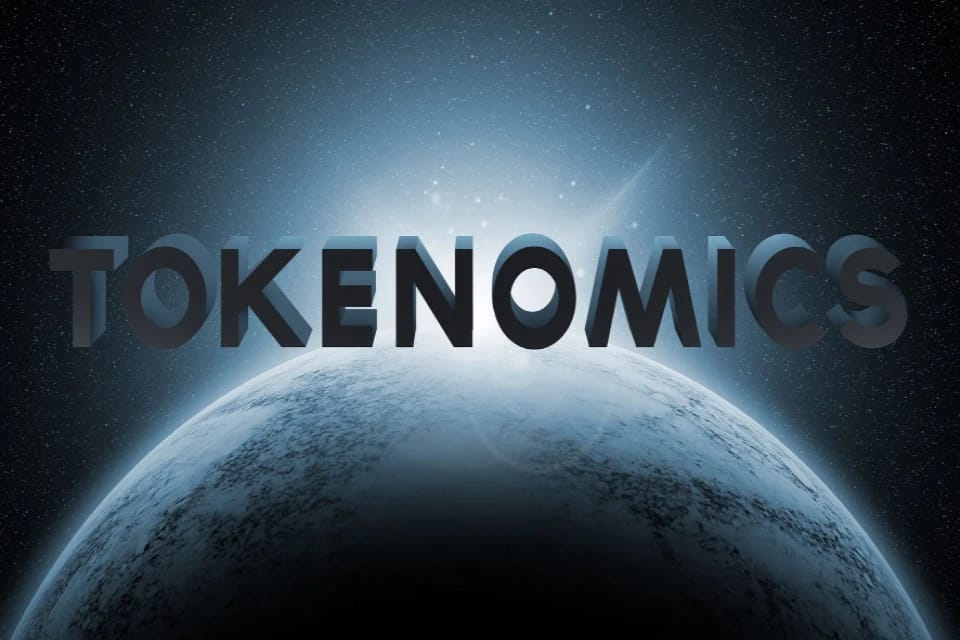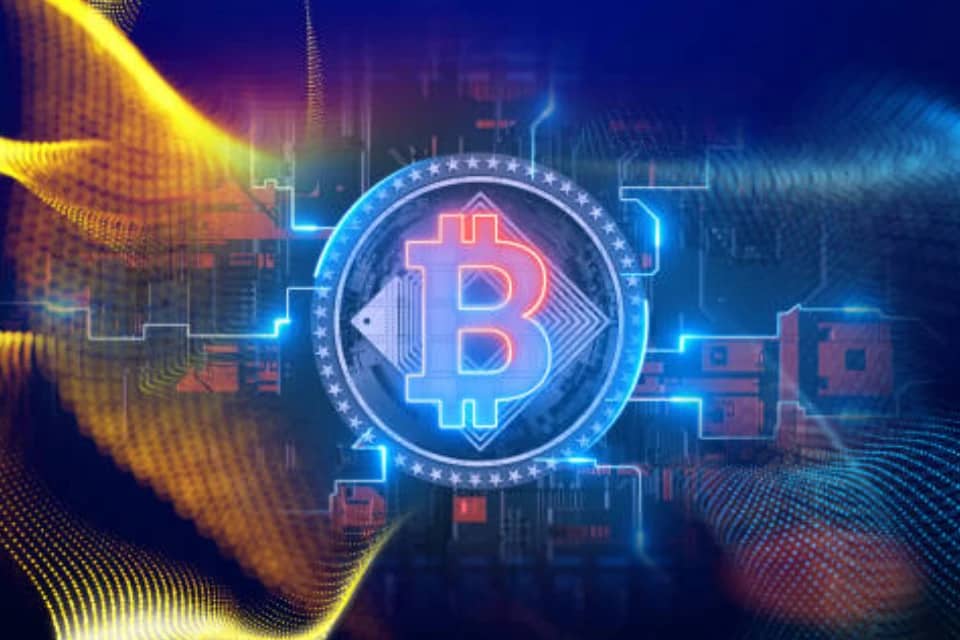
Posted June 10, 2022
TOKENOMICS-IMPORTANT FACTOR TO CRYPTO INVESTORS
What is Tokenomics and why is it Important to Investors in Digital Assets?
The tokenomics of a cryptocurrency project is an incredibly important factor to consider when deciding whether a future project has growth potential or not.
As the number of cryptocurrencies available on the market continues to grow, it is more than ever important for all digital asset investors to become familiar with this concept and understand how tokenomics can be used in practice to find the most profitable investments.

Tokenomics has become a popular term in recent years to describe the mathematics and incentives that govern cryptocurrencies.
It includes everything about the mechanics of how a particular cryptocurrency works, as well as psychological or behavioral forces that could affect its value in the long run.
Projects with well-designed tokenomics are more likely to succeed in the long run because they have encouraged investors to buy and hold on in the long run.
Projects with bad tokenomics are doomed to failure, as investors quickly sell their tokens at the first sign of trouble.

Whether you are considering buying cryptocurrencies or not, understanding tokenomics is one of the most useful first steps you can take to make a good decision.
IT ALL COMES DOWN TO SUPPLY AND DEMAND
As in a normal / traditional economy, the two forces that interest us most are supply and demand.
Understanding how they work in tokenomics gives us a sense of security as to how desirable a particular crypto token should be.
SUPPLY: EMISSIONS, INFLATION AND DISTRIBUTION
Let’s start on the supply side because it’s easier to understand and measure.
The main thing that everyone is trying to understand is the question: Based on the offer, should I expect this token to be retained or increase its value? Or will that value be inflated?
On the supply side, a token will increase in value if there is a smaller amount, we call this deflation.
A token will reduce in the value if there is a larger amount that is inflation.
When evaluating the supply side, you don’t have to worry about things like whether the token has any utility or will generate revenue for its owners.
You’re actually just thinking about the offer and how it will change over time.
The questions you want to ask are:
- How many tokens are there currently?
- How many will there ever be?
- How quickly do new ones come into circulation?
Bitcoin was created by a simple supply curve that will put all bitcoins into circulation for 140 years.
In total, there will be only 21,000,000 bitcoins, and they are put into circulation at a rate that is halved every four years.
Approximately 19,000,000 of them already exist, so only 2,000,000 will be put into circulation in the next 120 years.

This means that 90 percent of the supply is already in circulation, and that 10 percent of bitcoin will only be mined in more than 100 years, so you should not expect severe inflationary pressures that could reduce the value of bitcoin.
What about Ethereum? The circulating supply is about 119,700,000, and there is no limit to how many ethers there can be.
But Ethereum’s net emissions have recently been adjusted through a mechanism for so-called burning a certain part of transaction fees (EIP-1559), according to which Ethereum’s offer is expected to be deflationary, which will result in probably the largest offer being around 120 million tokens.

Given such a monetary policy, we should not expect large inflationary pressures on ether either, but deflationary ones that are very likely to be very good for the future price.
Dogecoin also has no final offer, and currently inflation is around 5 percent a year.
So, we should expect inflationary tokenomics to undermine the value of the dog more than those of bitcoin or ethereum.
The last thing you want to consider with an offer is an allocation.
Are there a few investors with a large amount of tokens that will be unlocked soon?
Did the protocol allocate most of its tokens to the community? How fair is the distribution?
These are just some of the issues to consider when looking at allocation.
If individual investors own 25 percent of the offer and those tokens will be unlocked in a month, it may not be the right time to buy.
As an example we will take some popular DeFi tokens.
Yearn, one of the first DeFi protocols, has a fixed offer of 36,666 YFI tokens.
There are no emissions or inflation, so you should not expect the value of YFI to decrease from inflationary pressure.

Meanwhile, Olympus has a large inflation schedule with huge amounts of new OHM tokens coming into circulation every day.
So, theoretically, you should expect that holding OHM will be a bad investment.
But, as we will soon see, the offer alone is not enough in assessing whether investing and holding a token is worth it.
These are the main considerations for the offer. Demand is where things get more interesting.
DEMAND: ROI, MEMES AND GAME THEORY
Anyone could make their own token, limit the offer to, say, 10,000, without additional emissions and inflation, and put them on the market.
According to the offer aspect, the token has great potential. So they should be worth millions, right?
Well, no, it is not so easy because no one wants to buy some random token.
Having a fixed offer doesn’t do anything worthwhile. People also need to believe that it has value and will have value in the future.
If you want to know if the token will have value on the demand side in the future, you’ll want to look at ROI, memes, and game theory.
Let’s start with ROI because it’s the easiest.
RETURN ON INVESTMENT
The ROI in this case is not how much you think that the price of the token will go up.
It refers to how much revenue or cash flow the token can generate for you, if you just keep it.
For example, if you hold Ether, you can invest it to secure the network after starting the proof-of-stake mechanism.
In exchange for “staking” your Ether, you receive dividends also in Ether, at a certain rate.
Some tokens allow you to take advantage of the earnings of the protocols they represent.

The second form of ROI comes from “rebasing,” similar to stock splitting, where by holding a token and staking you continue to get more of that token while the protocol increases its offering.
That’s how Olympus works and that’s why their high inflation rate isn’t necessarily a bad thing because you can keep a share of the protocol you own.
It is important to consider ROI because if the token does not have intrinsic ROI or cash flows, then it is harder to justify holding.
You have to believe that other people’s faith in the growing number is enough to sustain it.
Or you have to trust the memes.
MEMES
Another reason why people may want to invest in a particular token is simply the belief that other people want the same and will want it in the future.
You can call it faith, belief, or memes, but, whatever you call it, a machine that generates faith in the growth of future value will always be an important consideration.
How to evaluate it? Everything else in tokenomics was pretty measurable, but memes?
It’s the one that requires you to jump into the community and get a feel for it.

What is the energy in the Discrod server?
How active are they on Twitter?
Do people make this token or protocol part of their identity? How long have people been active in the community?
Belief in future value is often one of the most powerful drivers of demand.
Bitcoin has no cash flow or staking returns.
The value stems from the global community’s belief that bitcoin could be a better store of value asset than competing gold.
Or from more ambitious beliefs like hyper-bitcoinization.
But these are all just beliefs at the end of the day.
So while it’s tempting to be purely analytical, don’t dismiss how much capitalization the token can achieve with faith, smart memes, and cult followers.
There is a third element here that requires, which can combine parts of memes and parts of ROI. Let’s call it Game Theory.
GAME THEORY
Game theory asks you to consider what additional elements in tokenomics design could help increase token demand.
This is where tokenomics can become particularly complex.
But one common version of good token game theory is locking.
The protocol creates an incentive to lock tokens in a smart contract, usually in the form of higher rewards.
A classic example of this is the Curve DeFi protocol.
You can lock CRV tokens to earn a share of protocol revenue.
But the longer you lock tokens, up to 4 years, the higher your rewards are.
In addition, the more tokens you lock and the longer you lock them, the lower are the fees when using other products that Curve offers.

So Curve has extremely strong incentives and game theory around holding his token.
You can earn a decent ROI from staking, and you can earn a higher return from all other parts of the app.
And you make the most money by locking your tokens for four years, which dramatically reduces the incentive to sell CRVs.
As you can see, tokenomics is an incredibly important aspect of cryptocurrencies that covers a lot of parts and aspects that investors need to pay attention to.
Choosing a token with a strong tokenomics can help investors avoid fraud and volatility, ensuring that their investments grow and thrive in the long run.
Cryptocurrencies are as complex and diverse as the human motives that drive them.
Gaining complete understanding, from supply, demand, memes to game theories is time consuming and difficult.
As with any token design, human desires are aligned with technology to create the optimal solution for developers, the community, and investors.


NFT-THING OF THE PAST OR NEW INVESTMENT CHANCE







